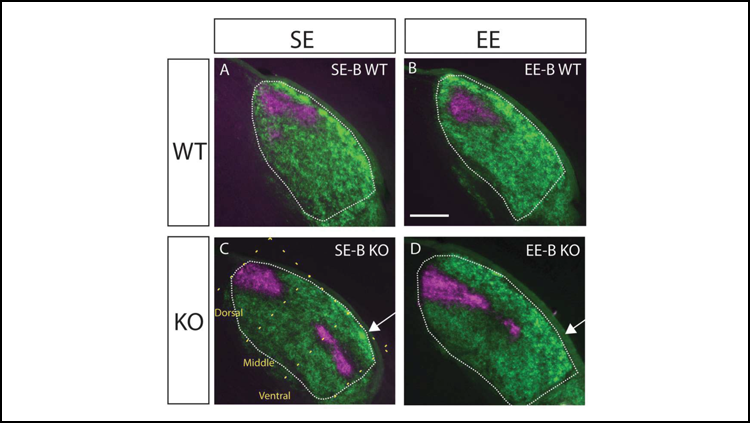Environmental Enrichment Corrects Errors in Brain Development
Environmental enrichment can partially correct miswired neurons in the visual pathway, according to research in mice recently published in eNeuro.
During normal development, neurons exit the retina and form connections in specific area of the lateral geniculate nucleus, a part of the brain involved in visual processing. In mice with a genetic mutation, the neurons land throughout the entire lateral geniculate nucleus in a thin, dispersed line. Such mapping errors lead to vision issues in adulthood.
Eggins et al. raised mice with genetic mapping errors in a standard cage or in an enriched environment with a variety of toys and stimulation. The mice living in an enriched environment from birth displayed less mapping errors in the lateral geniculate nucleus than those raised in standard cages. Mice without enrichment until adolescence or adulthood had the same mapping errors as the mice that lived in a standard cage.
Enrichment can counteract mapping errors, but within a strict critical period after birth. These findings point to the potential of using early childhood enrichment as a treatment for neurodevelopmental disorders rooted in miswired neurons, such as autism.
Read the manuscript in eNeuro: Environmental Enrichment Partially Repairs Subcortical Mapping Errors in Ten-m3 Knockout Mice During an Early Critical Period


















